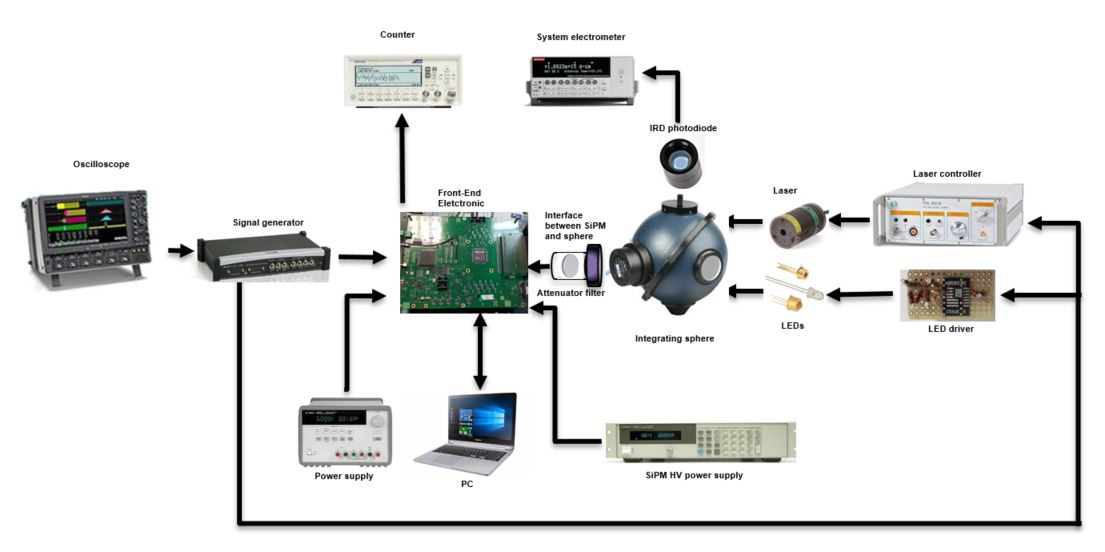Setup
The setup shown below can be used with both, Lasers and LEDs.
Characterization setup based on the use of pulsed light sources: Lasers and LEDs1
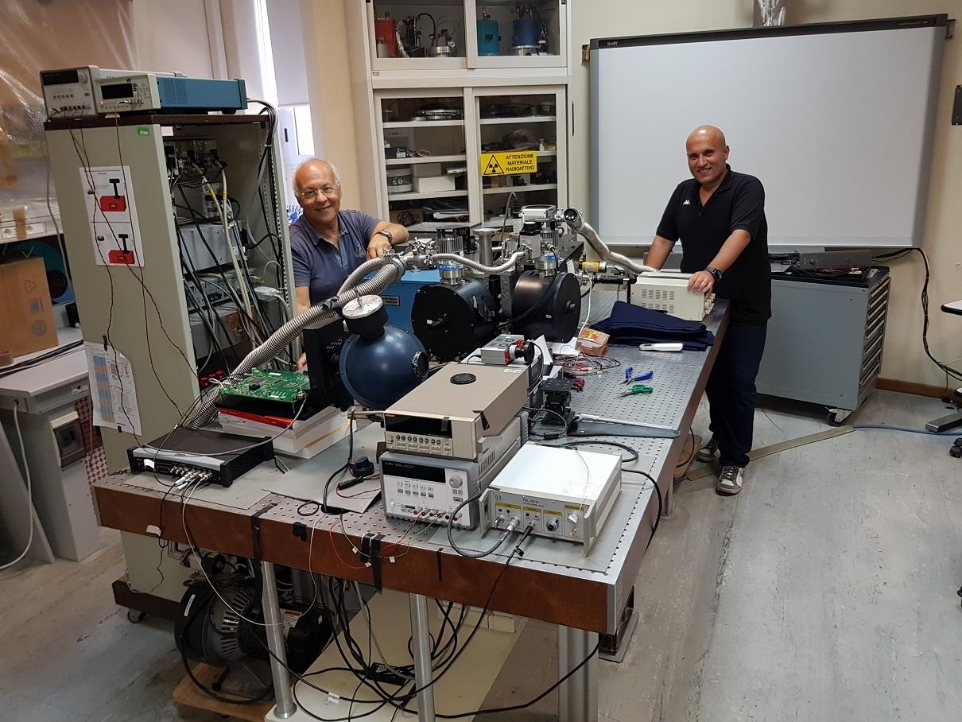
Giovanni Bonanno and Giuseppe Romeo in the laboratory at Catania Astrophysical Observatory. Photo: private
Light sources
At the COLD lab 3 Laser sources (405nm, 450nm, 635nm) and 16 LED sources (285-851nm) are available. To drive the LED sources an appropriate electronic circuit for fast signal was designed and built. This allows an appropriate polarization voltage for each LED which is settled at levels to have a suitable photon flux within the integrating sphere. This is necessary since for the correct PDE measurements the system must work in single photon counting regime.
Neutral density filters
Optical attenuators are necessary to have the correct luminous level at the SiPM, which on the one hand does not lead to saturation of the SiPM but on the other hand is high enough to have a sufficient current signal detected by the photodiode. Neutral filters ( ND30B, ND20B, ND13B, ND10B from Thorlabs) of different optical transmittance are used which were calibrated with high accuracy to determine the transmittance value for each wavelength.
Front-End Electronics
The same front-end electronics as used by the ASTRI project are used, which is the ASIC chip CITIROC 1A from WEEROC. Using these electronics the optical cross talk can be evaluated through Dark Stairs measurements and also the measurement of the Pulse height Distribution foe the PDE evaluation is possible.
Further details on the setup and electronics can be found in this paper: Characterization of the recently manufactured LCT5 and LVR Hamamatsu SiPMs suitable for the preproduction telescopes
Example of experimental results
The results shown here are obtained for the Hamamatsu LCT5 series which differ in size of the microcell and silicone coating. Further results, also for the LVR series, are shown in the above mentioned paper.
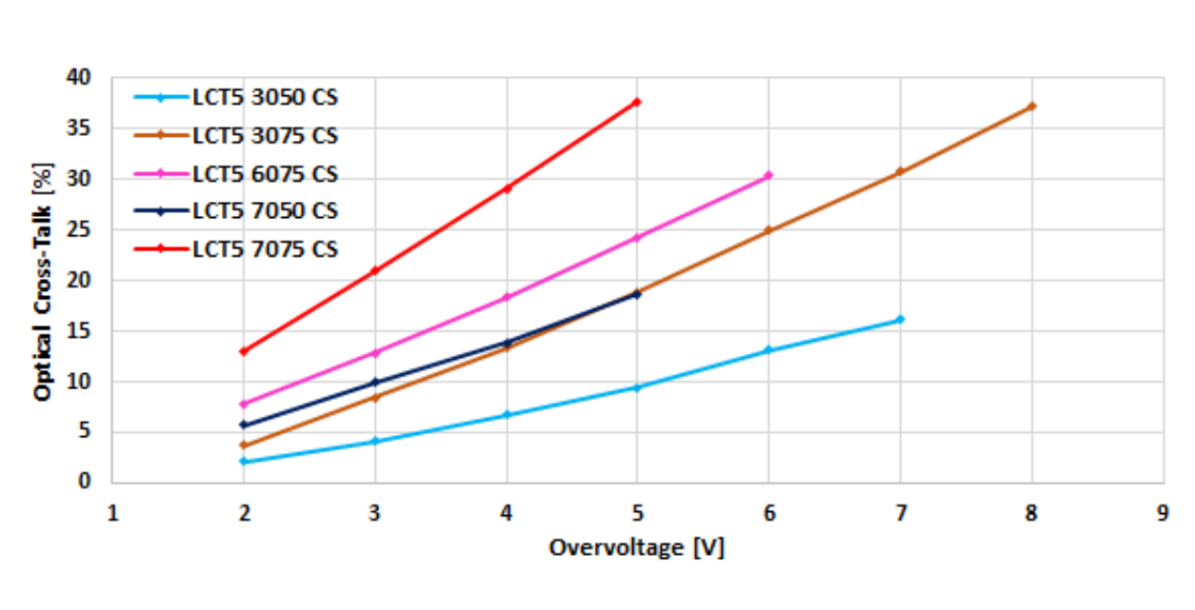
Optical Cross-Talk as a function of overvoltage for all the SiPMs LCT5 series.1
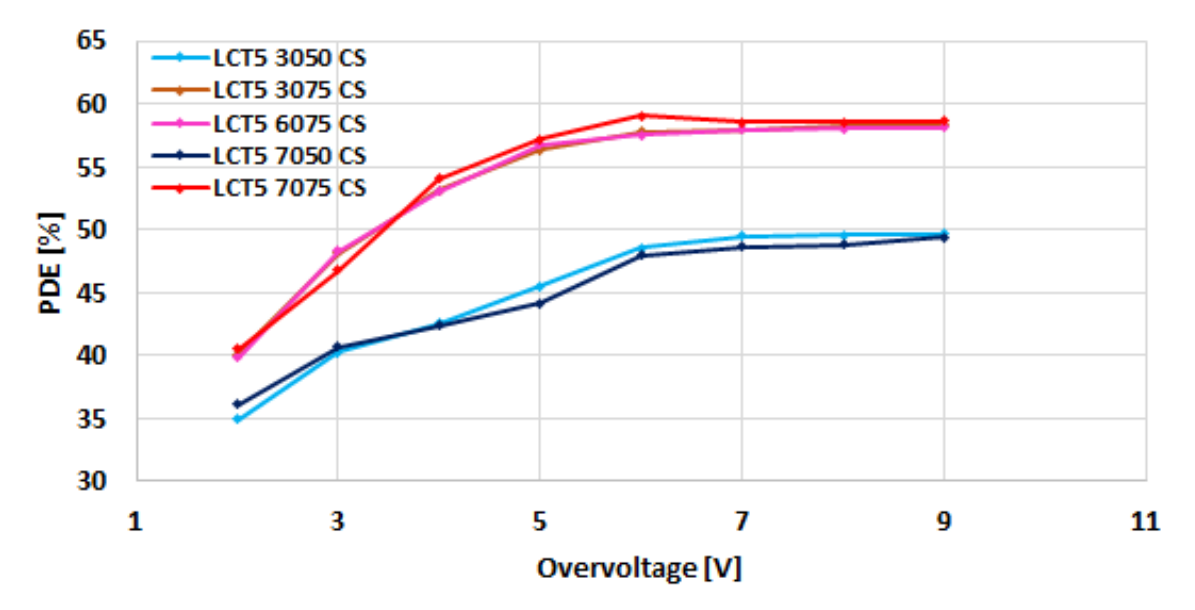
PDE @405nm versus Overvoltage for the LCT5 SiPM series.1
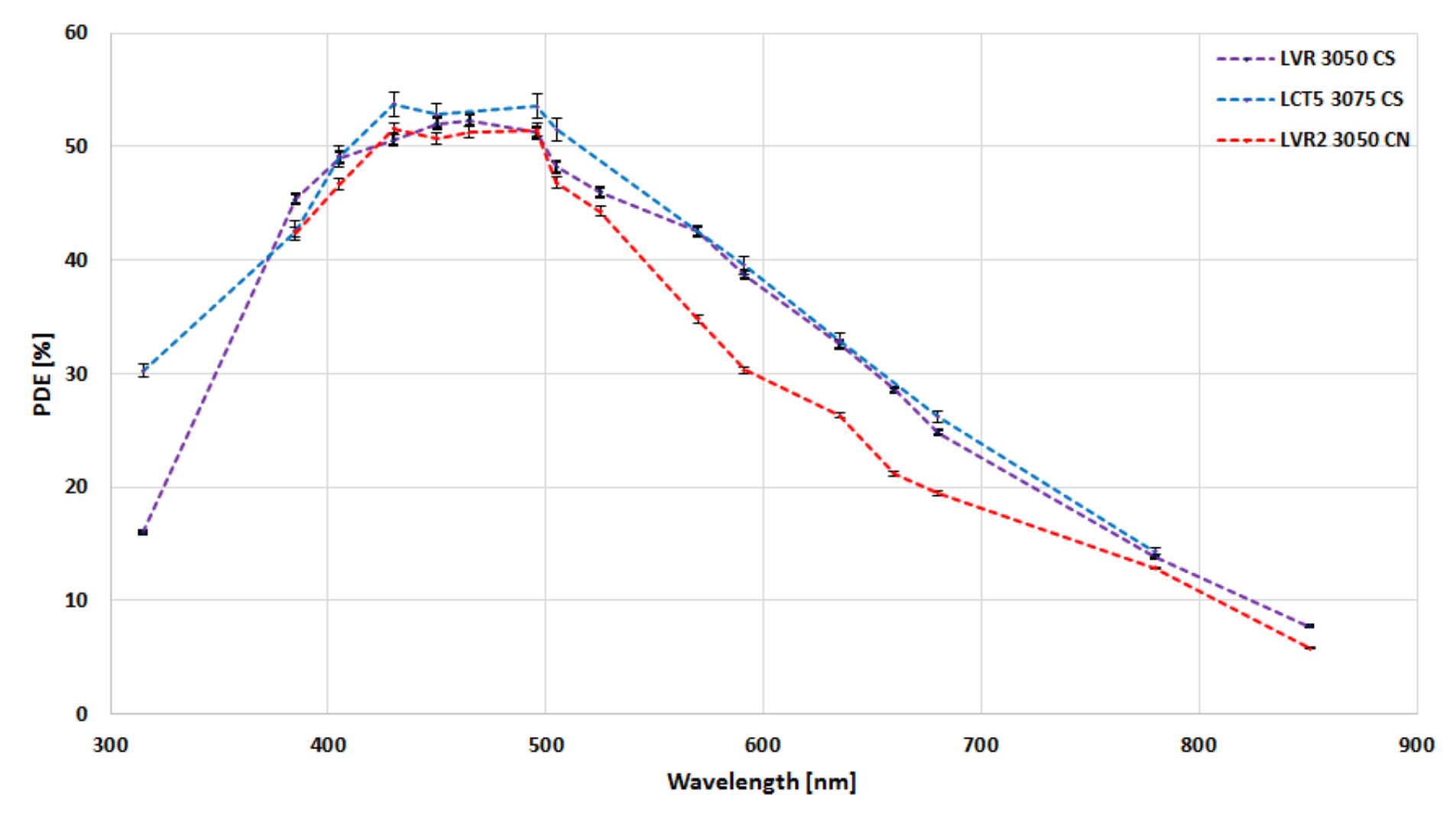
PDE in the 300 – 850 nm spectral range comparison for the LCT5 with 75μm microcells and
LVR2 with 50μm microcells with no coating (NC) SiPMs.1
Response versus angle of incidence measurements
At the Catania laboratory also the measurement of the MPPC Photon Response (PR) versus the Angle of Incidence (AoI) can be performed using the experimental set-up illustrated below. Detailed description of the setup and results can be found in this paper: Characterization of a 6x6-mm2 75-μm cell MPPC suitable for the Cherenkov Telescope Array project
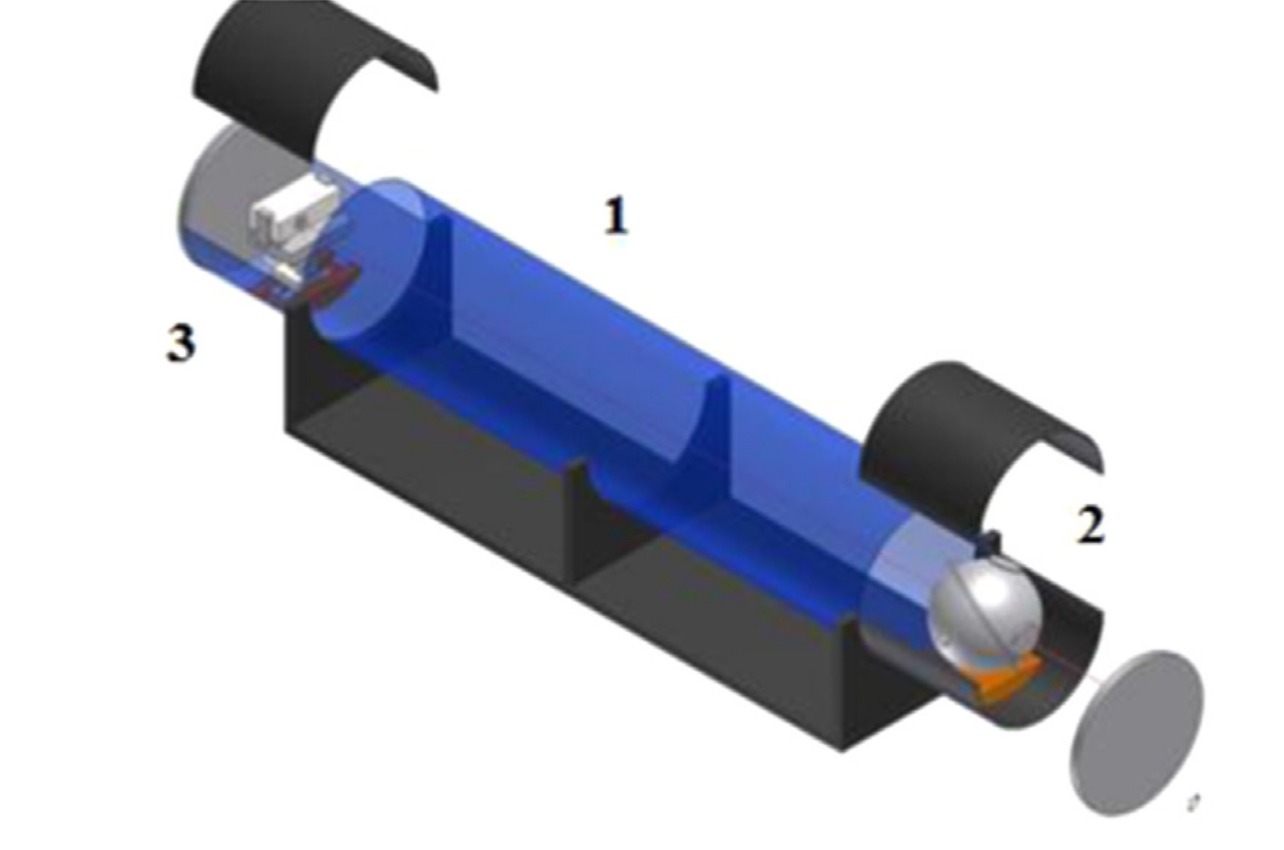
3D view of the system:
1. the tube; 2. source and integrating sphere; 3. the PSAU-CAEN system.2

Photograph of the actual system.2
Example of experimental results
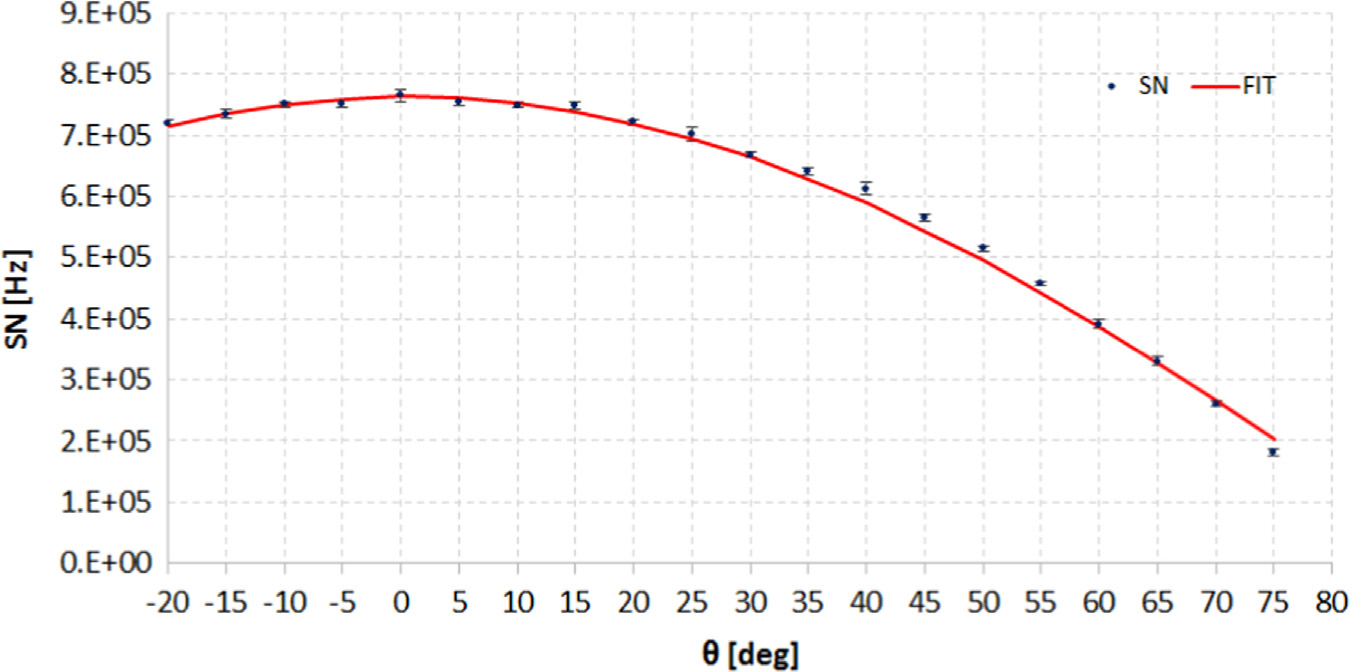
Detected signal SN at 568 nm vs incidence angles (dark-blue points) for the
Low Cross-Talk (LCT) large-area (6x6-mm2 ) Multi-Pixel Photon Counter (MPPC) detector manufactured by Hamamatsu.
The best fit model is plotted with the red line. Parameters of the fit are SN0=7.653E5±5E2 counts/s, and θ0=-0.69±0.06°. Error bars correspond to ±3σSN.2
Contact
INAF - Osservatorio Astrofisico di Catania
This email address is being protected from spambots. You need JavaScript enabled to view it.
Phone nr : +39 095 7332204
1 from G. Romeo, G. Bonanno, Characterization of the recently manufactured LCT5 and LVR Hamamatsu SiPMs suitable for the preproduction telescopes, Rapporti interni e tecnici N.2/2017, INAF - Osservatorio Astrofisico di Catania
2 from G. Romeo et al., Characterization of a 6x6-mm2 75-μm cell MPPC suitable for the Cherenkov Telescope Array project, NIM A, Volume 826, 2016, https://doi.org/10.1016/j.nima.2016.04.060.
